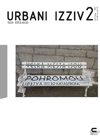Impacts and consequences of residential segregation of Roma in urban spaces: Case studies from Hungary
Impacts and consequences of residential segregation of Roma in urban spaces: Case studies from Hungary
Author(s): Jenö Zsolt Farkas, József Lennert, Andras Donat Kovacs, Imre KanalasSubject(s): Rural and urban sociology, Inter-Ethnic Relations, Ethnic Minorities Studies
Published by: Urbanistični inštitut Republike Slovenije
Keywords: residential segregation; medium sized and small towns in post-communist countries; Roma ethnic minority; urban development;
Summary/Abstract: This article explores residential segregation and its characteristics in medium-sized and small towns in the Southern Great Plain statistical region of Hungary. The study highlights the main features and driving forces of segregation connected to post-communist urban development. We are approaching this from the perspective of the following questions: How are segregation processes connected to ethnic issues and living conditions? What can the local government do to solve this problem? The article concludes that residential segregation is a frequent phenomenon in Hungarian agro-towns. These processes share some similarities but also differ to some degree from western European or US examples. The results emphasise the importance of complex thinking about social integration, local planning and more effective financial allocation.
Journal: Urbani izziv
- Issue Year: 28/2017
- Issue No: 2
- Page Range: 136-148
- Page Count: 13
- Language: English

